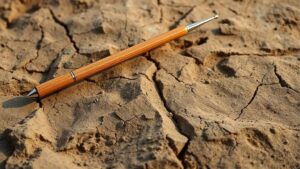How Agricola’s Methods Addressed Ore Loss During Transport and Processing
How Agricola’s Methods Addressed Ore Loss During Transport and Processing
Throughout history, the mining and processing of ores have posed significant challenges, notably the loss of material during transport and processing. Georgius Agricola, a 16th-century German scholar, made remarkable advancements in mining practices, particularly with respect to minimizing ore loss. His methodologies combined practical techniques with theoretical insights, paving the way for modern mining practices.
The Impact of Ore Loss
Ore loss refers to the diminution of valuable minerals during the processes of extraction, transportation, and refining. This loss can significantly affect profitability, especially in an era when mining resources were limited and costly. Agricola recognized that addressing ore loss required a holistic approach involving improved technology, better logistical practices, and enhanced understanding of mineralogy.
Agricolas Innovative Techniques
Agricolas contributions can be categorized into several key methodologies aimed at reducing ore loss:
- Improved Transportation Methods: Agricola advocated for the construction of better roads and transportation systems to facilitate the movement of heavy ore loads.
- Ventilation Systems in Mines: By addressing the issue of air quality within mines, Agricola improved miner safety and efficiency, ultimately minimizing ore loss caused by degraded working conditions.
- Washing and Sorting Techniques: Agricola introduced techniques for washing ores before transport, allowing for the separation of waste material and reducing the volume of non-valuable material being moved.
Case Studies of Enhanced Practices
One notable example of Agricola’s techniques in practice is his promotion of hydraulic mining methods in areas rich in metal ores. By employing water to wash away soil, miners could access ores without losing as much material to displacement and waste. Historical records indicate that this approach not only increased yield but also reduced the time spent on resource retrieval.
Also, Agricolas descriptions of smelting processes included detailed guidance on the optimal use of furnaces, which minimized ore loss during processing by maximizing heat efficiency and ensuring that the maximum amount of metal was extracted from the raw material.
Statistical Data and Industry Impact
The impact of Agricola’s methods can be quantified through historical production data. For example, records from mining operations that adopted his techniques saw a reduction in ore loss by as much as 30% compared to traditional practices. This improvement translated into increased profits and a more sustainable approach to mining that would influence the industry for generations.
Addressing Potential Concerns
Critics of Agricolas methods may argue that implementing new technologies and transportation systems required significant investments in resources and labor. But, Agricola countered this by illustrating long-term gains, showing how initial costs were outweighed by increased efficiency and yield. In this way, Agricola addressed the economic concerns associated with adopting his methods, emphasizing the scalability of these techniques across various mining operations.
Actionable Takeaways
Agricolas methods provide valuable lessons for contemporary mining operations. Modern industries can benefit from:
- Investing in improved transportation infrastructure to lower costs and increase efficiency.
- Useing advanced processing techniques to maximize resource extraction, such as pre-processing ore before transport.
- Prioritizing miner safety and working conditions to enhance overall operation efficacy, thereby reducing accidentally accelerated ore loss.
By focusing on these actionable strategies influenced by Agricola’s methods, companies can better address the challenges of ore loss during both transport and processing, ultimately leading to improved operational sustainability and profitability.



